Northern Arizona University Research and Mentoring for Postbaccalaureates (RaMP)
The Research and Mentoring for Postbaccalaureates (RaMP) program at Northern Arizona University (NAU) is an intensive year-long research experience designed to train and connect recent college graduates with research careers supporting improved ecosystem health . Northern Arizona University’s program is funded by the National Science Foundation’s Research and Mentoring for Postbaccalaureates in Biological Sciences.
RaMP scholars will be selected based on the following criteria:
- Interest in a career in biology or natural resource management,
- Limited opportunity for participation in research, post-degree technical training, or other educational opportunities. Limitations could be the result of many factors including: finances, health, family, geographic location, or the COVID pandemic, etc.
- Alignment of participant interests with research themes and the expertise of mentors (described below),
- Overall academic potential.
RaMP scholars will work closely with mentors to design and implement research projects focused on helping to mitigate or prevent the damaging effects of drought and other ongoing challenges on southwestern landscapes. Our long-term goal is to help you be part of a skilled workforce capable of responding to our unique regional challenges. Research projects will be co-produced by science faculty, community members, land managers, and fellows. This program aims to prepare participants for jobs or additional graduate education in these areas.
The program offers each participants the following benefits:
- $42,500 one-year stipend to cover living expenses;
- NAU group health insurance (single);
- a laptop budget; and
- travel expenses for field research, conferences, and workshops.
Read more about the program and its goals in an NAU News story.
Program elements
The RaMP program kicks off with a 3-day retreat and orientation program at the nearby Merriam Powell Research Station, located in the Coconino National Forest 5 miles from campus. At the retreat, participants will create an individual plan to develop their scientific identities over the course of the next year while getting to know other program participants, mentors, and staff.
Following orientation, participants will finalize their roles in a research group through conversations with mentors and program staff. Participants will work full time on research projects with mentor and team input and weekly meetings. Support and training will be tailored to the background, needs, and goals of individual participants to ensure they are competitive for the next step in their career, whether that is to directly enter the environmental biology workforce or to continue training in graduate school. Individual research programs will be supplemented through multiple field trips and an annual workshop to learn scientific principles, learn about challenges from local communities, and meet potential employers.
RaMP participants will meet weekly with program staff to grow their skills through discussions, tutorials, guest lectures, and written and oral communication practice sessions. Topical areas will include: (1) ecological concepts; (2) ecological history; (3) conduct and design of research; (4) field and lab safety; (5) responsible conduct of research; (6) formal and informal written and oral communication and interpretation of scientific literature; (7) professional skills, career pathways, and identity; (8) teamwork and leadership; and 9) quantitative skills, data collection, and data management.
Participants will present research findings and participate in professional development at regional conferences. We will also host an Annual Research Symposium at NAU for fellows to share their research with NAU faculty and fellows, as well as all co-mentors, network partners, collaborators, and family members. This annual celebration will offer fellows an opportunity to share what they have learned with all stakeholders and their families.
Research groups
Pinyon pine is one of two tree species defining the habitat of dry southwestern forests and is projected to disappear from broad swaths of its range. Collaborators have noted increasing loss of pinyon pine to drought and to increases in fuelwood cutting with the closure of a local coal mine. Loss of pine nut harvest is of concern to many people in the region, and the NPS is also concerned about drought impacts and restoration after fire. Finally, there is growing concern in the US Forest Service and Great Basin Bird Observatory over decline in pinyon jay population.
Research questions to aid climate change mitigation in pinyon-juniper ecosystems may include:
- How important is genetic diversity for maintaining populations through unprecedented disturbance?
- What are the patterns of current and predicted loss of pinyon pine?
- How can soil microorganisms and biocrusts enhance re-establishment after catastrophic fire?
- What are the impacts of pinyon decline on pinyon jays?
This research area will include opportunities for field monitoring, lab work, genetics, and mapping involving plants, microbes, insects, and pinyon jays.
Drought, fire suppression, and introduction of domesticated livestock degraded Emory oak habitat, leading local community members to express concern over the future of southwestern Emory oak populations. The goal of this initiative is to ensure resilience of Emory oak stands and promote viable oak populations to sustain acorn harvest for future generations.
We will develop fundamental knowledge on Emory oak acorn dispersal, habitat requirements, and range wide growth, survival, and disease dynamics. Fellows will employ ecological survey techniques, vegetation identification skills, and capacity related to sampling design and essential Geographic Information Systems (GIS) skills. There is a potential to support greenhouse and laboratory experiments related to disease dynamics. This pod provides a tool kit to understand fundamental ecological concepts, interpret ecological research and reports, develop, and implement comprehensive monitoring plans for natural resource management, and generate recovery and management strategies for species of concern.
Grazing, drought, and invasive plants are interacting threats to dryland ecosystems of the southwest. Using biocrusts and soil organisms to stabilize soils and return ecosystem functions and restore native plant communities and fire cycles are of key interest across all stakeholders, NGOs, and businesses, and have been areas of rapid research expansion. This effort involves collaboration from stakeholder groups such as the Collaborative Forest Landscape Restoration Program (CFLRP) and Trees Water, People on the Jemez District in New Mexico forested lands, and BLM, TNC, NPS and USGS partnerships in rangeland and desert ecosystems in Arizona, Utah, Nevada and California. In addition to the grasses and biocrusts in these ecosystem, numerous other plants used by local populations for food, dye, medicine, fiber or ceremonial uses are affected by drought and other change agents.
Participants in this research group will work to assess the effectiveness of management actions, such as grazing and fire management and ‘seeding’ of biocrust, grasses, and forbs to promote ecosystem health and sustainability.
Research questions to aid conservation and management of drylands might include the following:
- How do drought, fire and/or grazing pressures interact to affect plant and soil community stability and health?
- Does restoration of soil communities lead to development of soil stability and native plant communities?
- Can we restore dryland communities for land use sustainability?
Fellows in this group will gain experience in field, laboratory, and greenhouse studies, learning tools including survey methods, experimental design, soil organism and plant identification, microscopy, GIS, etc.
Springs, rivers, and ponds provide water for humans, livestock, and wildlife and also support aquatic species from vegetation to invertebrates and amphibians. These aquatic ecosystems represent a small but essential part of the dry southwestern landscape, and can be heavily impacted by both land use and global change. Projects in this group seek to support land managers working to monitor and restore these ecosystems. Projects may focus on the health of aquatic and riparian ecosystems across the landscape, or strategies for restoring biodiversity in particular sites.
Research questions to aid conservation of aquatic and riparian ecosystems:
- How are land management and drought affecting the quality and availability of aquatic habitats?
- Which riparian plants will continue to thrive and support their ecosystems in hotter and drier conditions?
- Can restoring riparian and aquatic vegetation help us conserve a diverse community of aquatic invertebrates and amphibians?
Fellows in this group may gain experience with field surveys, laboratory or greenhouse experiments, microscope and/or DNA-based identification of animal diversity, and/or remote sensing and GIS analysis, depending on the project. All fellows will learn how to take a research project from design of data collection through data analysis to interpretation and presentation of results.
Herbaria are collections of pressed plant specimens that act as biological libraries to catalog the morphological diversity of plant species. The Deaver Herbarium and the Navajo Nation Herbarium, both housed at NAU, collectively contain approximately 140,000 specimens, with a geographic focus on northern Arizona and the southern Colorado Plateau. Herbaria are valuable resources for studying variation within and among plant populations or species across geographic, temporal, or environmental gradients.
Scholars will address questions such as:
- How does plant biodiversity vary among the different biomes of Northern Arizona?
- Where is plant species diversity greatest in Northern Arizona?
- How has plant biodiversity changed over time?
- What are important indicator species for ecosystem health in different regions and in different biomes of Arizona?
- Are there any plant species that should have their threatened/endangered/rare status re-evaluated?
This research area will include opportunities for the scholar to participate in field surveys, lab work, trait measurement using AI, genomics, collecting and mounting herbarium specimens, and data analysis. The herbaria at NAU are fully digitized and publicly available online. The scholar will be able to add to the digitized collections, as well as generate new datasets via additional databases such as iNaturalist.
Application deadline extended to March 4, 2025
Thank you for your interest in applying to NAU’s RaMP postbaccalaureate training program! Please review the application requirements below and submit your completed application no later than March 4, 2025 . The program will begin June 23, 2025, and run through June 9, 2026.
Documents required include an unofficial transcript, two letters of recommendation (by email to Anita.Antoninka@nau.edu), and a short statement of interest.
Please note that you can pause progress and continue your application as needed. The form will save your progress. However, we encourage you to prepare all documents ahead of working in the form.
Apply now
Contacts
The following people are available to answer questions about the program and application process. They are happy to help you and you are encouraged to contact them.
Phone: 928.523.8727
Phone: 928.523.2669
Previous RaMP scholars
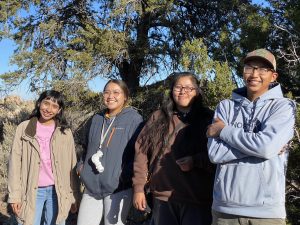
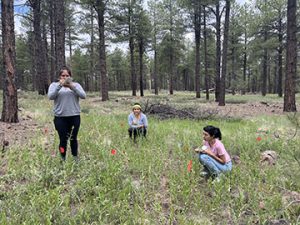
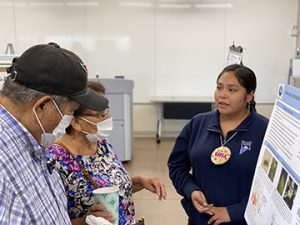
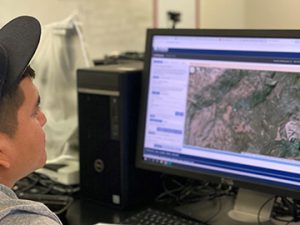
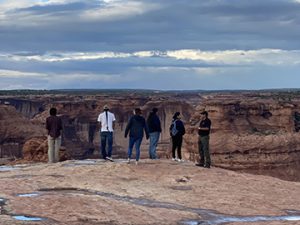
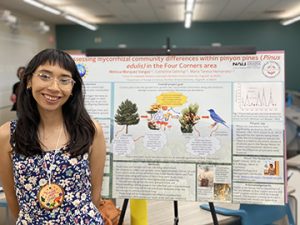
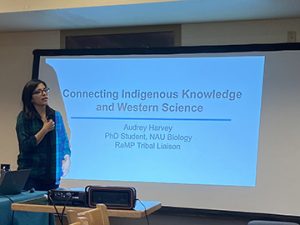
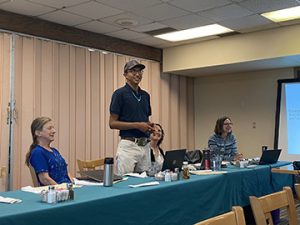
To learn more about the activities of previous RaMP scholars, please visit their personal websites:
Amber Archie, Environmentalist, Scholar
Catrina Alberts, PhD Student Interested in Environmental DNA
Brandee Keyonnie, Researcher Studying Trees’ Reaction to Drier and Warmer Conditions
Madeline Mayorga, Soil Restoration Ecology
Shawna Woody, Explorer
Jared Litson Begay, Forestry